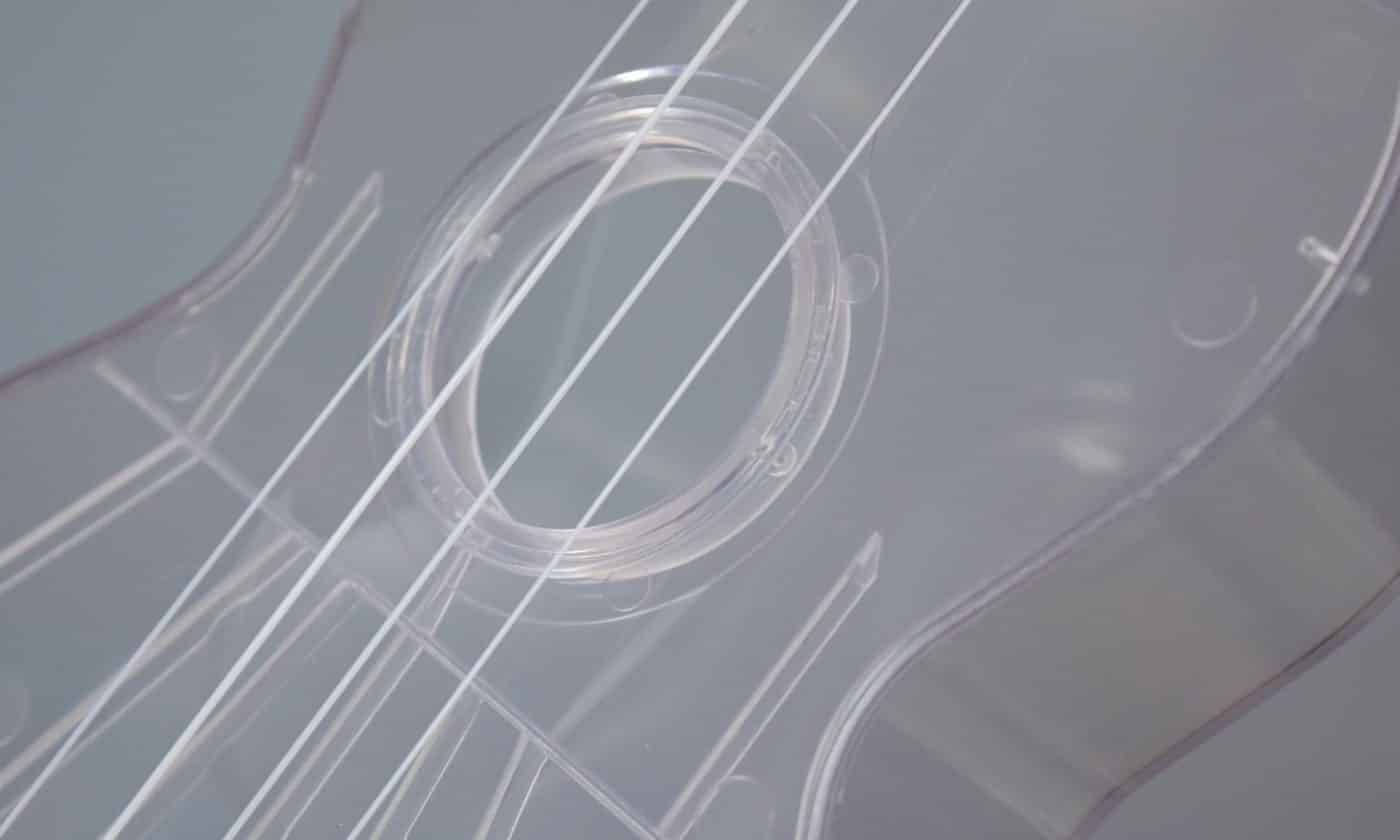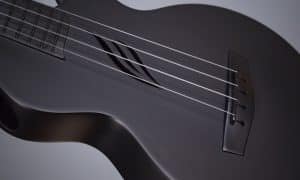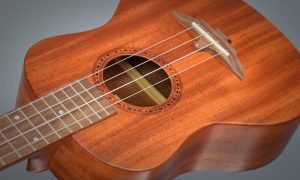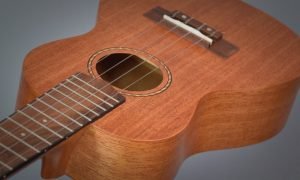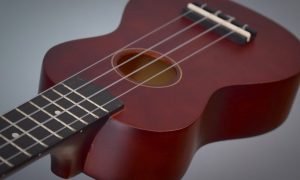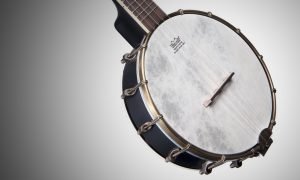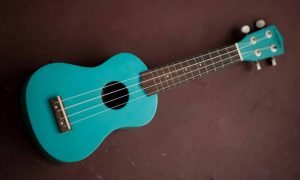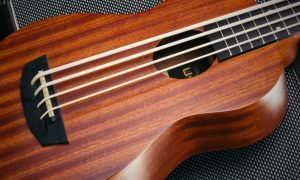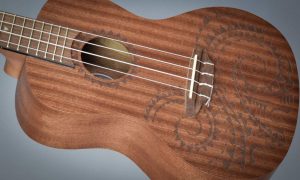In this Kala Waterman ukulele review, I’m going to take a closer look at Kala’s unique line of plastic ukuleles.
I purchased two Waterman plastic ukuleles for this review: the Pale Yellow model and the Transparent Ice clear plastic uke. My impressions were the same for both unless otherwise noted in the article.
|
|
Kala Waterman Plastic Ukulele | 469 Reviews | $39.99 | Check Current Price |
Summary
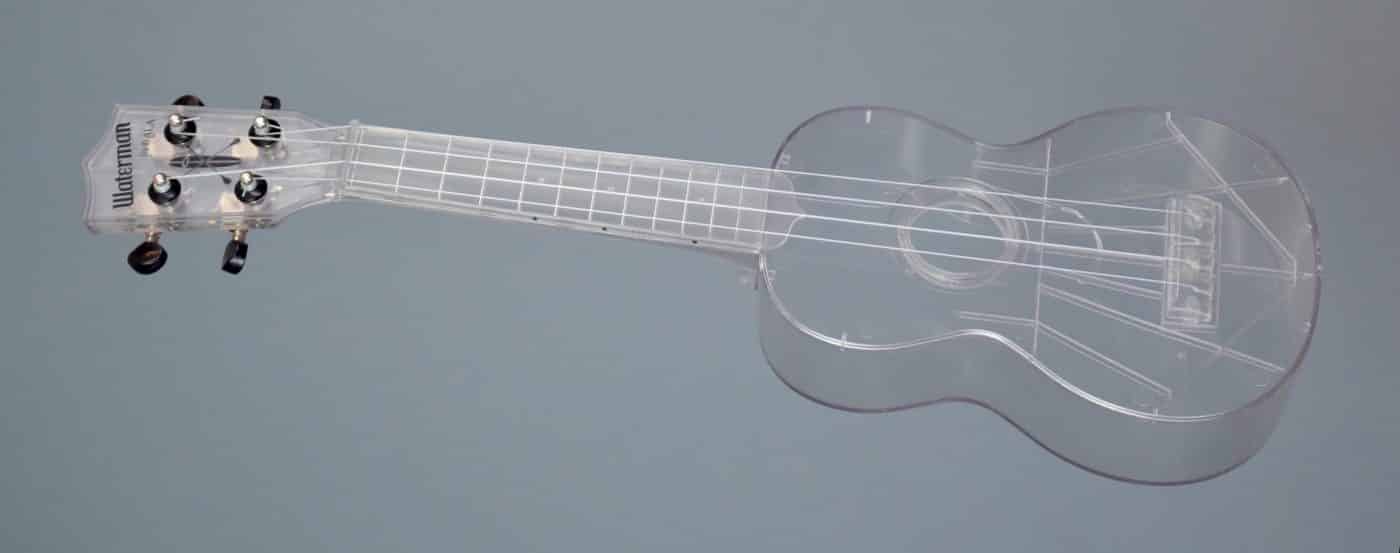
| 469 Reviews | $39.99 | Check Current Price |
The Kala Waterman isn’t bad, but it’s not great.
The tone is decent, and the Waterman’s plastic body is practically indestructible under normal circumstances. If you’re looking for a rugged, weatherproof uke for travel or camping, you could do a lot worse at this price point.
It’s certainly hard to deny the novelty factor–there’s just something fun about an all-plastic ukulele. It looks cool hanging on the wall and makes a great conversation piece.
Still, I’m tempted to recommend a cheap wood uke over the Waterman. The Kala KA-15S or Donner DUS-1 are both about the same price and are, frankly, much better instruments.
Bottom Line: If you expect to go places where your uke will be directly exposed to large amounts of water, the Waterman is OK for the money. Otherwise, I think there are better options out there.
Construction & Build Quality
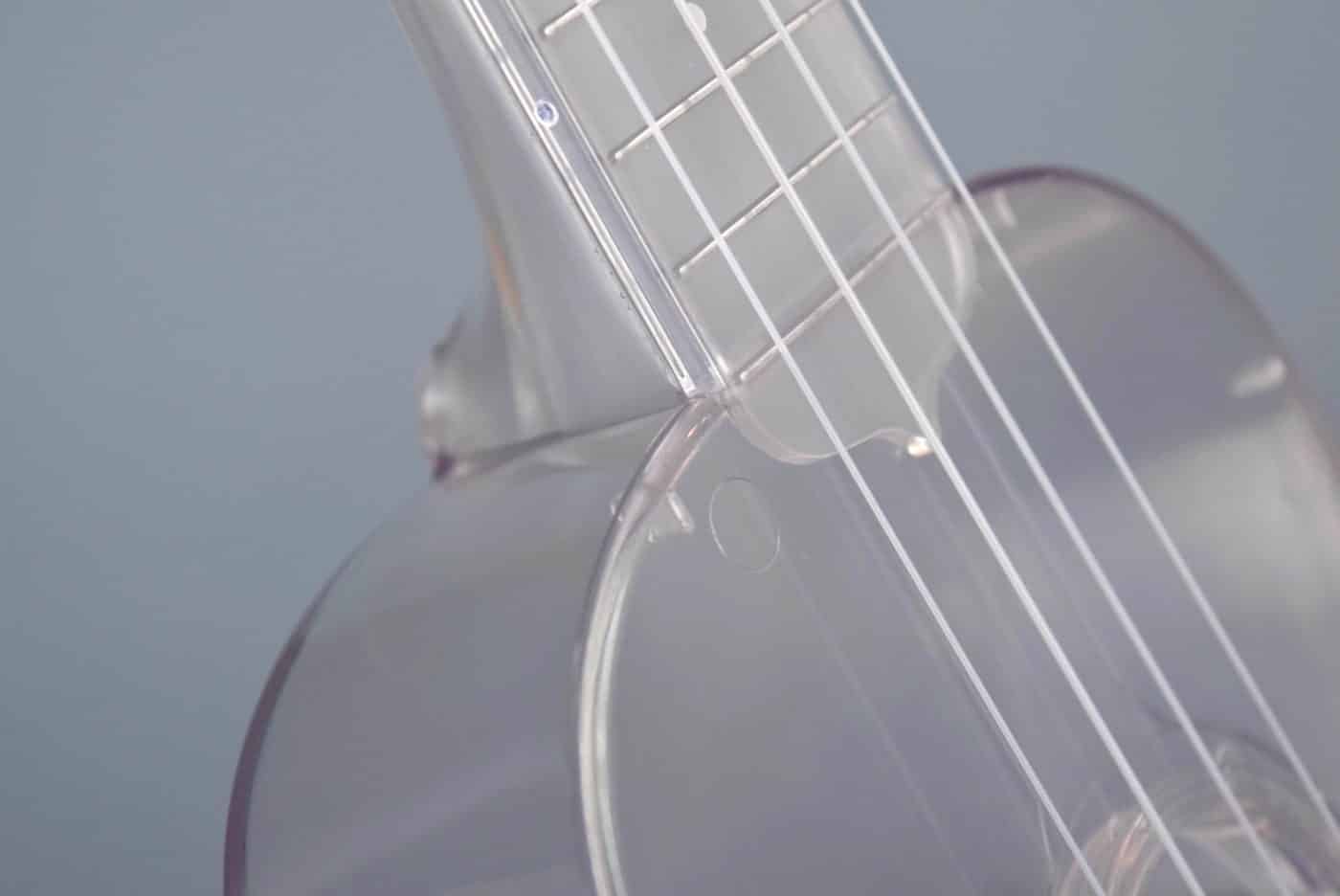
Waterman ukes are entirely plastic except for the tuners and strings. From what I can tell, there are just four pieces in a Waterman plastic uke:
- Back, sides, and neck
- Top and bridge
- Fingerboard
- Headstock overlay
Type of Plastic
The clear plastic transparent model is made from polycarbonate, and the colored models are ABS. The ABS plastic feels a little less flexible than the polycarbonate, but otherwise, the two models are identical.
Bracing
The top has integrated bracing on the inside. The back and sides are unbraced.
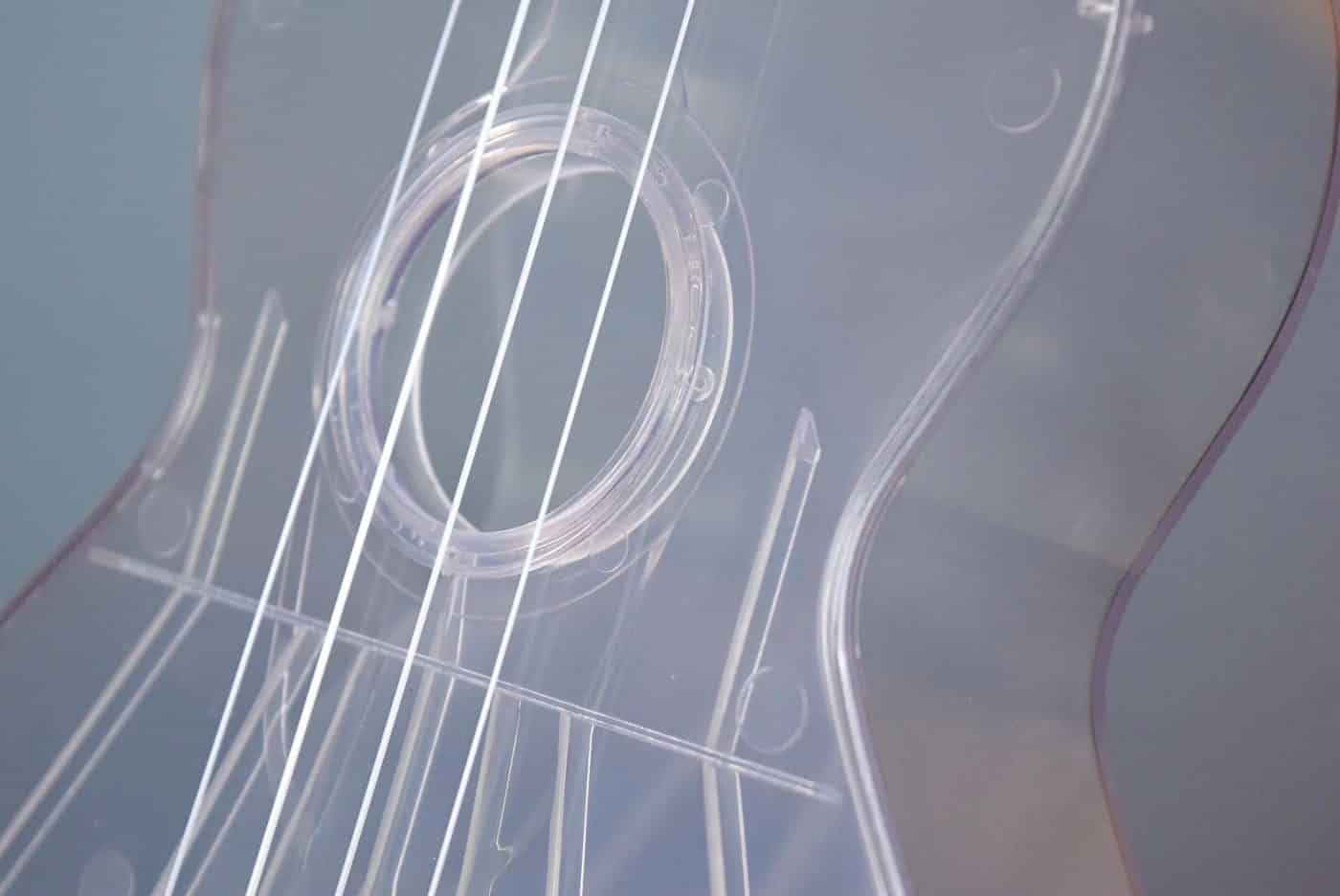
Quality & Durability
The ukes feel very sturdy and rigid. These ukes feel like they could take a beating, but I chose not to test this theory.
The curves are smooth throughout and the angles are sharp and crisp. No visible mold lines except on the end of the heel. Overall, very nice, clean construction.
The plastic on the colored models has a satin finish that looks and feels great.
Weight
The Waterman feels a little heavier than my soprano-sized wooden ukes. It’s not a big difference and nothing that would bother anybody.
They do feel a little neck-heavy, but again, I don’t think it’s enough to bother anyone.
Colors
I’m a big fan of the color options offered on this model, especially the solid colors. They all seem to be inspired by vintage cars from the 50s and 60s. Very cool.
There are also a number of transparent models, including clear, green, pink, purple, and orange.
Hardware
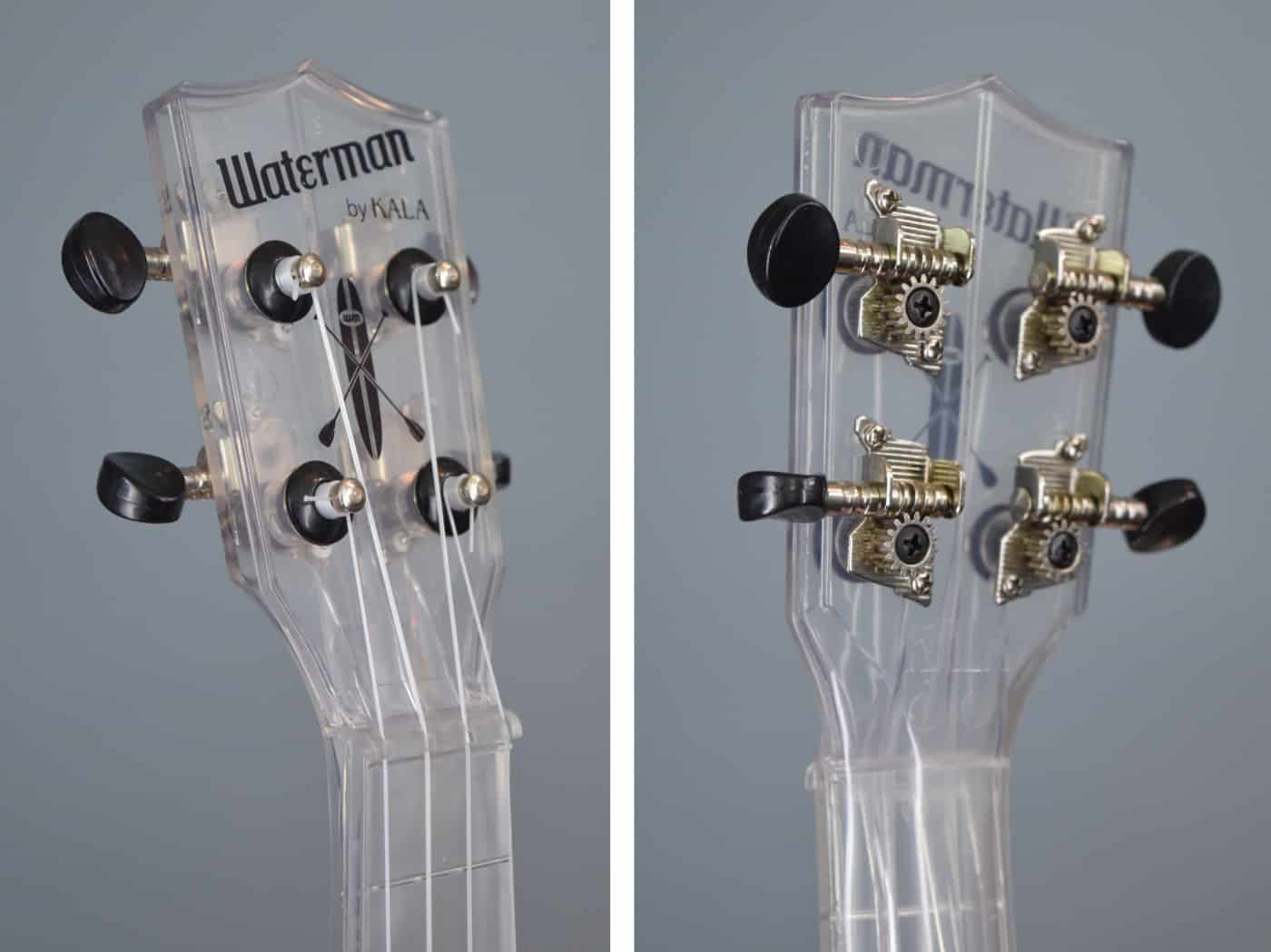
Tuners
The Waterman’s geared tuners are in line with other entry-level Kala ukes. They get the job done but are a little rough in spots and have a bit of play. Considering the price point, I have no real complaints about them.
Frets
I can’t exactly call the frets “hardware” since the Waterman has plastic frets that are molded right into the fretboard.
They were a little thinner and lower than typical metal frets, so I felt like I didn’t get as much positive contact when pushing down on a string. Not a deal-breaker, but something to be aware of.
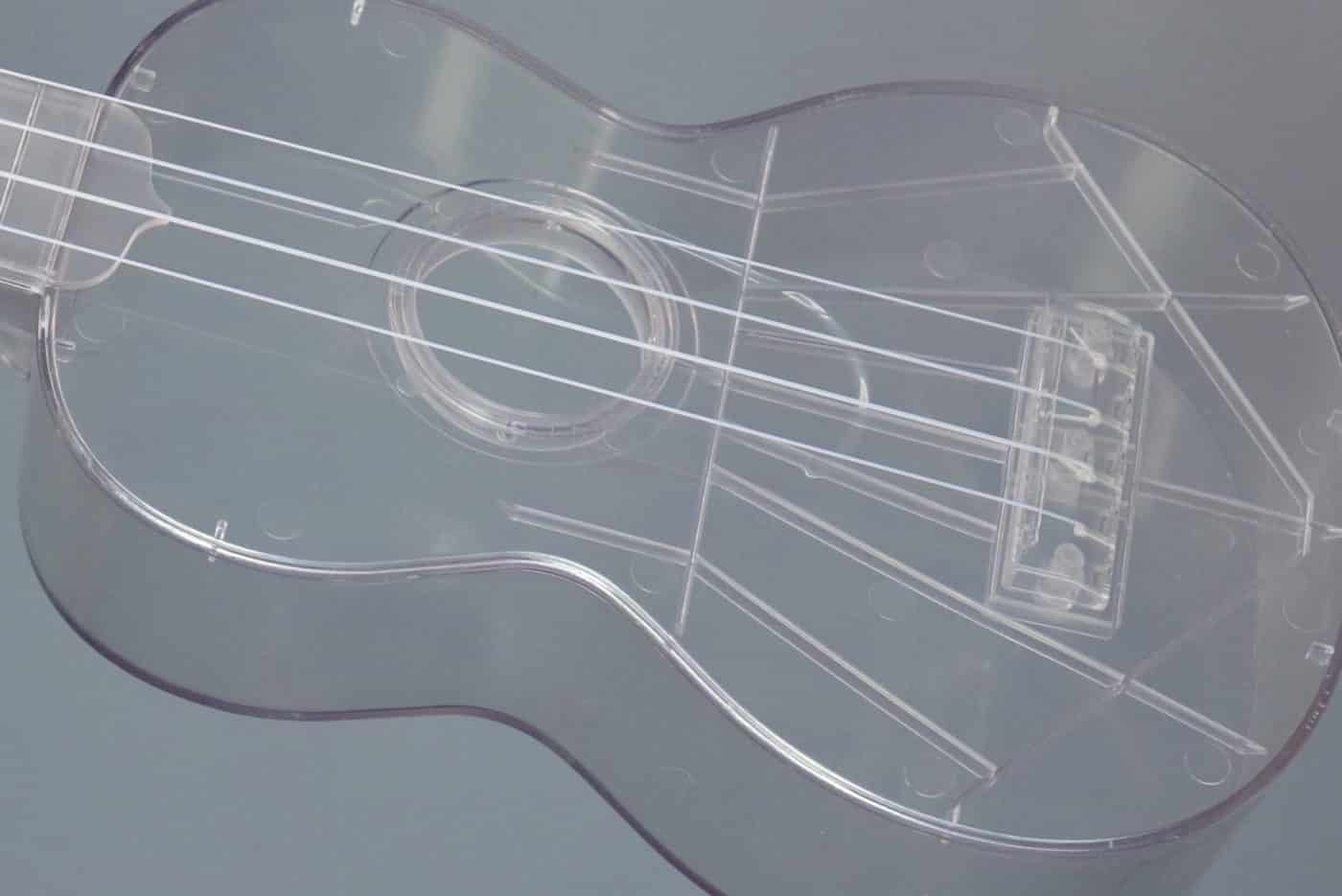
Tone
Both of my Waterman ukes sound pretty good. They didn’t blow me away, but they sounded better than I was expecting from an inexpensive plastic ukulele.
I would describe the tone as loud and surprisingly warm, but a little plunky. The higher notes sounded somewhat thin and weak. Better than many ukes in this price range, but not as good as others I’ve heard.
Differences Between Models
Tone is one area where I noticed a difference between the Pale Yellow model and the Transparent Ice clear ukulele. It’s a subtle difference, but the clear model sounded a bit warmer and fuller than the yellow one.
The two ukes are made from different types of plastic, which probably accounts for the tone difference. The plastic on the clear is a little softer than the plastic used for the yellow model.
Playability
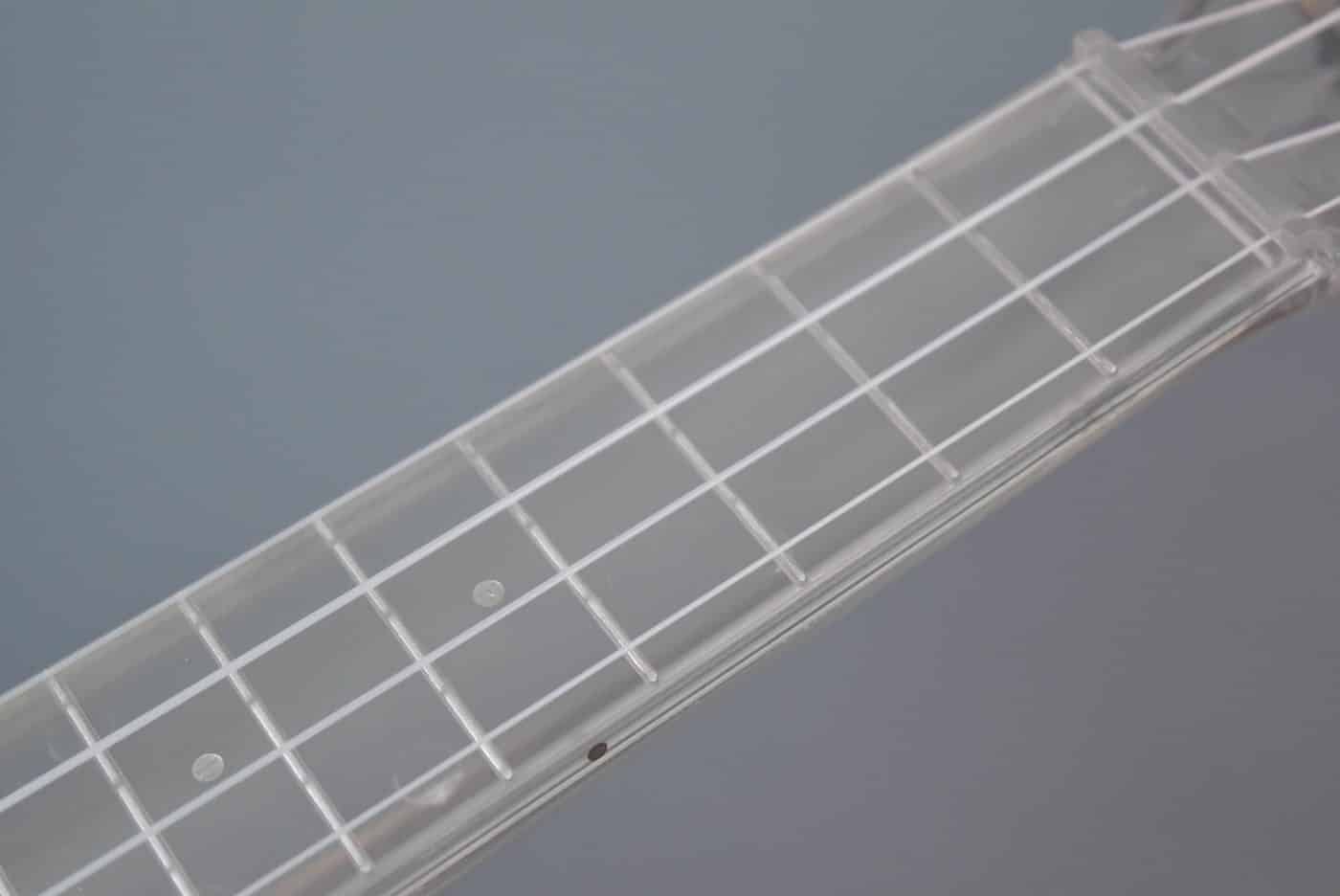
My biggest complaint about the Waterman is the playability. To be blunt, it’s not good.
High Action
Both of the models I ordered had very high action (string height) from the nut all the way up to the 12th fret. The action was literally two to three times higher than other beginner ukuleles I’ve played.
There was a lot of forward bow in the neck, which seemed to be the main reason for the high action.
No Adjustability
The way these plastic ukuleles are built, there’s no way to lower the strings. The fretboard has a zero-fret that makes dropping the nut slots impossible. The bridge and saddle are combined with the ukulele’s top, and the saddle is so minimal there’s no room to file it down.
Playability Verdict
With all that said, the Waterman isn’t unplayable. I can get around just fine on the fretboard and play most chords without any real issues.
It’s just too bad that action is so terrible because it’s the one thing that prevents the Waterman from being a really cool little uke rather than a novelty.
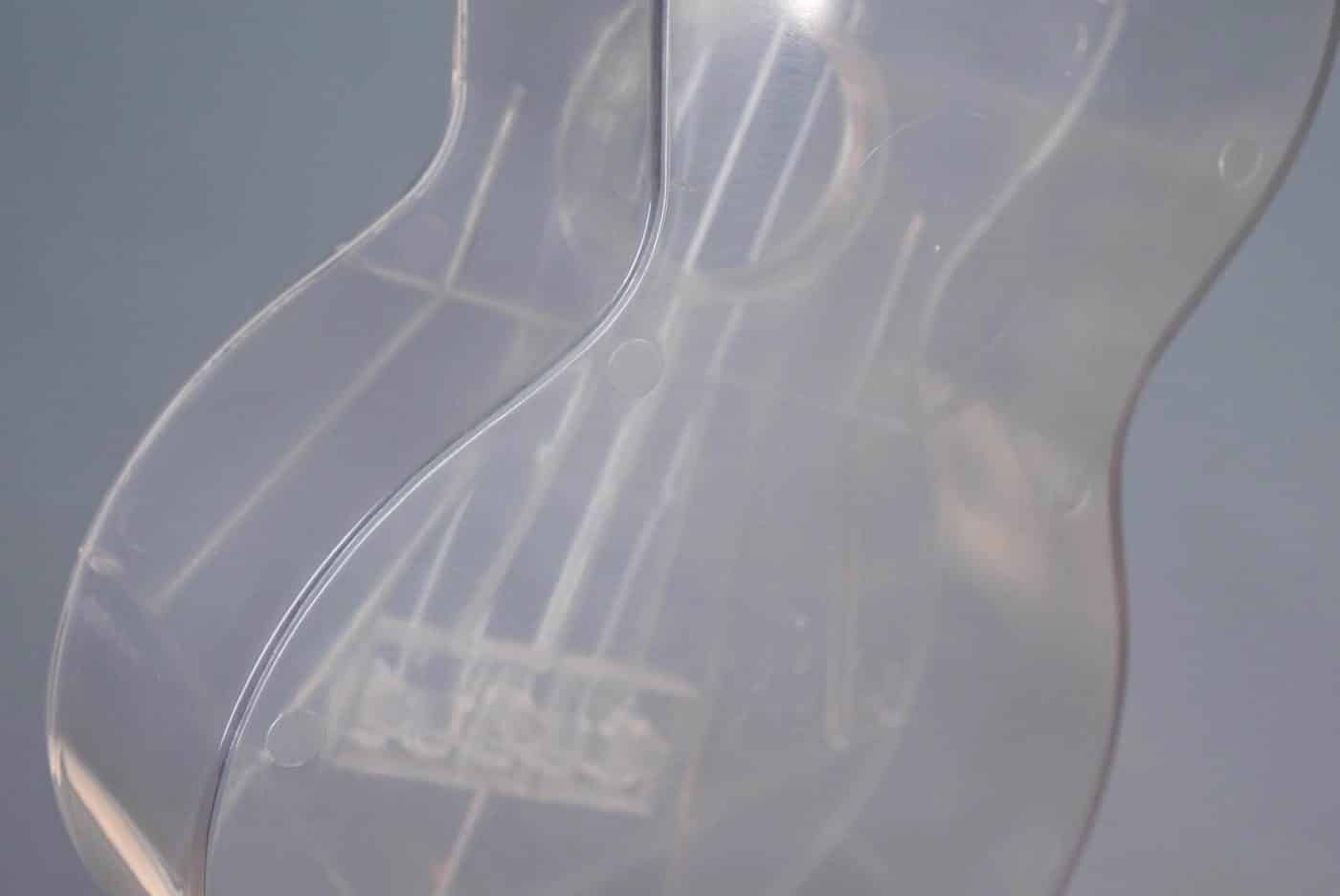
Accessories & Extras
The Waterman plastic ukulele doesn’t include any accessories like a tuner, extra strings, etc.
It does come with a thin, canvas-like drawstring sack. I suppose it’s better than nothing, but it won’t offer much protection.
You Might Also Like...
-
The Best Cheap Ukuleles (2022 Edition)
Buying a cheap ukulele is tempting, but it's easy to get burned. My guide to the best cheap ukes has everything you need to know to find a great budget uke.
-
The Best Beginner Ukulele: My Top 7 Picks
Finding the best ukulele for beginners can be overwhelming. In this guide, I look at good beginner ukuleles that fall within the $50 to $100 price range.
-
The 8 Best Ukuleles Under $100
Are you in the market for a good, affordable beginner ukulele? Check out this list together this list of the eight best ukuleles under $100 online.

